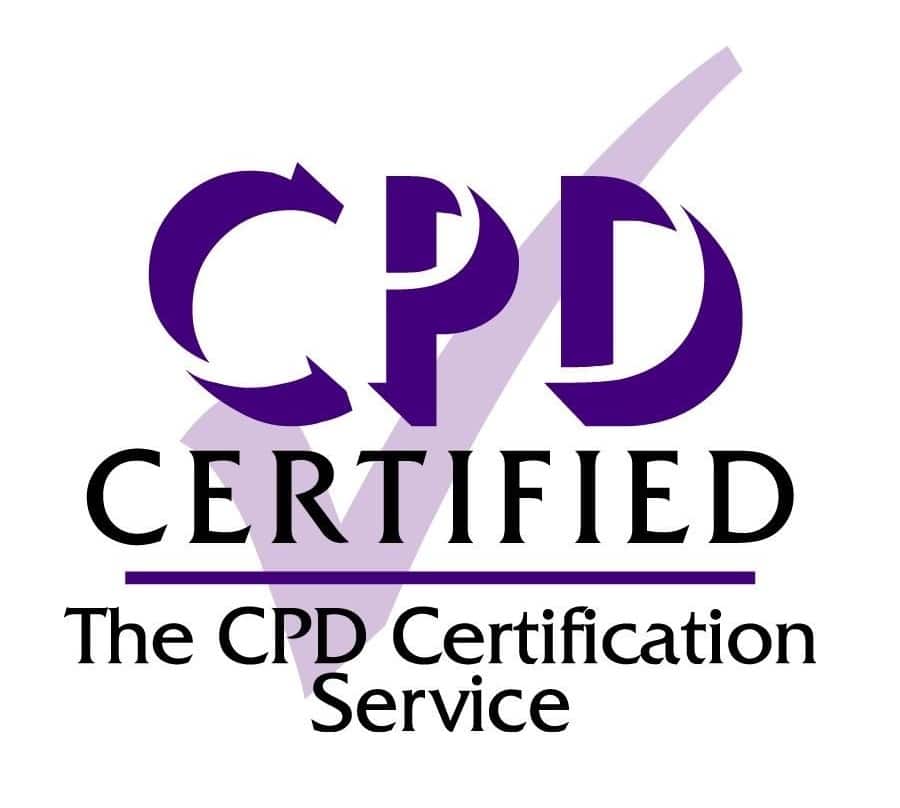تقييم المخاطر للمديرين
Buy Pay As You Go credits
- Pay as you go, buy credits and use on any course*.
- One credit gives you access to one course for one user from £1.99 a credit
- Unlock bigger discounts by purchasing more credits! – Use scroll bar below to review:
*Excluding Care Certificate and Management Courses
Cost per Credit: £8.50
Credits: 1. Total Price: £8.50
حول الدورة
Risk assessment is a critical component of care management, ensuring the safety of service users, staff, and visitors. Effective risk management minimises accidents, injuries, and regulatory breaches, helping care providers maintain high-quality, compliant services.
This course provides comprehensive training on identifying hazards, evaluating risks, and implementing control measures in care environments. It covers legal requirements, best practices, and practical applications of risk assessment, equipping care managers with the knowledge and tools to proactively manage risks.
Care managers must ensure continuous monitoring, regulatory compliance, and staff training to reduce workplace hazards and protect vulnerable individuals. Poor risk management can lead to serious incidents, CQC enforcement actions, and reputational damage for care providers.
By the end of this course, participants will be able to conduct effective risk assessments, implement preventive strategies, and create a strong safety culture within their organisation.
This course is ideal for care managers, compliance officers, health and safety leads, and senior care staff responsible for risk management, legal compliance, and workplace safety in care settings.
ماذا سوف تتعلم
فهم تقييم المخاطر في أماكن الرعاية
Develop a strong foundation in risk assessment principles, legal frameworks, and compliance requirements.
- Introduction to Risk Assessment
Learn how to identify hazards, evaluate risks, and implement effective control measures. - Legal and Regulatory Frameworks
Understand key regulations, including the Health and Safety at Work Act 1974, the Management of Health and Safety at Work Regulations 1999, and Regulation 12 of the Health and Social Care Act 2008. - Steps to Manage Risks
Explore best practices in risk identification, assessment, mitigation, and documentation, ensuring compliance with CQC and HSE requirements. - Risk Assessment Responsibilities in Care Settings
Differentiate between employer, management, and worker responsibilities, ensuring staff accountability and safety culture.
Controlling Risks and Ensuring Safety
Learn proactive risk management strategies to prevent accidents, enhance safety, and improve care quality.
- The Role of Care Managers in Risk Control
Develop a proactive approach to risk prevention, ensuring compliance with safety protocols and staff training. - Risk Control in Different Care Settings
Explore tailored risk management strategies for care homes, domiciliary care, and specialist care environments. - Using Technology to Enhance Risk Control
Learn how AI-driven analytics, wearable devices, and real-time monitoring can predict, prevent, and manage risks more effectively. - Developing a Proactive Health & Safety Policy
Implement structured policies that reduce risk exposure, improve compliance, and foster a safety-first culture.
Collaborative Risk Management and Workplace Safety
Understand how multidisciplinary collaboration enhances risk management and ensures workplace safety.
- Working with OTs, Nurses, and Social Workers to Reduce Risks
Learn how Occupational Therapists (OTs), nurses, and social workers contribute to risk reduction, ensuring person-centred care. - Risks to Carers and Employer Responsibilities in Staff Safety
Implement strategies to protect care workers from manual handling injuries, violence, burnout, and infection exposure. - Adequate Supervision in Care Settings
Learn how effective supervision, peer mentoring, and safety audits improve risk management outcomes. - Providing Training and Information on Risk Management
Discover best practices for staff training, risk communication, and ongoing safety improvements.
Accident Prevention, Investigations, and Emergency Response for Care Managers
Learn how to lead investigations, manage emergency situations, and implement corrective actions.
- Leading Accident Investigations in Care Settings
Conduct structured incident investigations to identify root causes, implement preventive measures, and ensure regulatory compliance. - Managing First Aid and Emergency Preparedness in Care
Ensure that first aid training, emergency response procedures, and crisis management protocols meet legal and regulatory standards. - Implementing Safety Signs and Hazard Communication
Learn how proper signage, hazard warnings, and clear communication reduce risks and improve workplace safety. - Understanding Risks in Residential vs. Home Care Settings
Compare risk management approaches in care homes and domiciliary care, ensuring effective safety measures for different care environments.
By completing this course, care managers will gain the knowledge, skills, and confidence to lead risk assessment initiatives, ensure workplace safety, and maintain high compliance standards in care settings.
محتوى دورة
مراجع
مراجع
- قانون الصحة والسلامة في العمل لعام 1974. (1974). UK Legislation on Workplace Health and Safety. متوفر في: https://www.legislation.gov.uk/ukpga/1974/37
- لائحة إدارة الصحة والسلامة في العمل لعام 1999. (1999). Legislation on Risk Assessments and Safety Management. متوفر في: https://www.legislation.gov.uk/uksi/1999/3242/contents/made
- Health and Social Care Act 2008 (Regulated Activities) Regulations 2014 – Regulation 12 (Safe Care and Treatment). (2014). Legislation on the Provision of Safe Care and Treatment. متوفر في: https://www.legislation.gov.uk/uksi/2014/2936/contents/made
- قانون الرعاية 2014. (2014). Legislation on Adult Social Care, Wellbeing, and Safeguarding. متوفر في: https://www.legislation.gov.uk/ukpga/2014/23/contents/enacted
- Health and Safety (First Aid) Regulations 1981. (1981). Legislation on Workplace First Aid Requirements.متوفر في: https://www.legislation.gov.uk/uksi/1981/917/made
- Care Quality Commission (CQC) – Regulations for Health and Social Care Providers. (اختصار الثاني). Guidance for Care Providers on Meeting Regulatory Requirements. متوفر في: https://www.cqc.org.uk/guidance-providers/regulations-enforcement/regulations-service-providers-managers
- Health and Safety Executive (HSE) – Risk Assessment Guidance for Care Settings. (اختصار الثاني). Best Practices for Conducting Risk Assessments in Care Settings. متوفر في: https://www.hse.gov.uk/healthservices/risk-assessment.htm
- National Institute for Health and Care Excellence (NICE) – Managing Medicines in Care Homes (NG67).(2017). Guidelines on Safe and Effective Medication Management in Care Homes. متوفر في: https://www.nice.org.uk/guidance/ng67
- Skills for Care – Medication Management in Social Care. (اختصار الثاني). Guidance on Administering and Managing Medication in Social Care Settings. متوفر في: https://www.skillsforcare.org.uk/resources/Documents/Standards/Medication-Management-Guidance.pdf
- Care Quality Commission (CQC) – Reporting Accidents and Incidents in Care Homes. (اختصار الثاني). Guidance on Mandatory Reporting of Accidents and Incidents in Care Homes. متوفر في: https://www.cqc.org.uk/guidance-providers/regulations/reporting-accidents-incidents
- Health and Safety Executive (HSE) – Lone Working Guidance for Domiciliary Care Staff. (اختصار الثاني). Guidance on Managing Risks for Lone Workers in Domiciliary Care. متوفر في: https://www.hse.gov.uk/pubns/indg73.pdf
- Social Care Institute for Excellence (SCIE) – Preventing Falls in Care Homes. (اختصار الثاني). Guidance on Fall Prevention Strategies in Care Homes. متوفر في: https://www.scie.org.uk/falls/prevention-care-homes
- Glasby, J. (2017). Understanding Health and Social Care: Critical Perspectives (3rd ed.). Bristol: Policy Press.
- Manthorpe, J., & Moriarty, J. (2018). Risk and Safety in Social Work. London: Routledge.
- Walsh, P. P., & Crumbie, A. (2020). Watson’s Clinical Nursing and Related Sciences (9th ed.). London: Elsevier.

“Duis aute irure dolor in rerehenderit in voluptate velit esse cillum dolore eu fugiat nulla pariatur. استثناء الخطيئة”
كاثرين كاتس
مصمم مبتدئ في الشركة

“Duis aute irure dolor in rerehenderit in voluptate velit esse cillum dolore eu fugiat nulla pariatur. استثناء الخطيئة”
دانييل سميث
مطور جوال في شركة بيزنس
التقييمات والمراجعات







